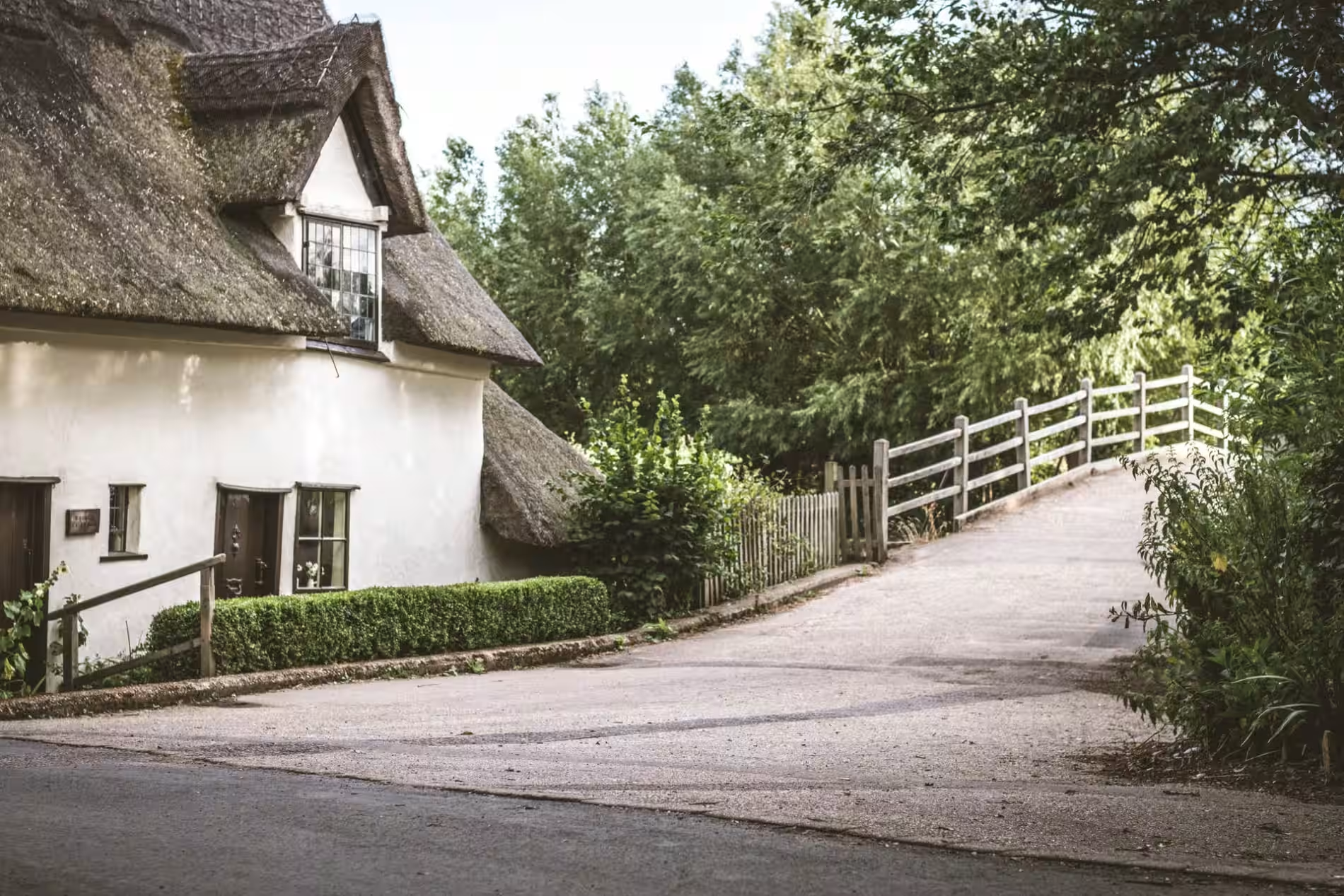According to Savills estate agent, there are around 60,000 thatched properties in the UK and a lot of them are affordable too. According to Country Life, you can pick up a beautiful thatched property for under £250,000.
Many people love purchasing a thatched property because of their character and story. Each thatched property is unique and will therefore require a bespoke assessment when it comes to offering an insurance policy.
Most people are unaware of the process of insuring a thatched property. Below we outline the five considerations for insuring a thatched property and four easy steps on how to get your property insured using Stanhope Insurance.
Get a quote now
Five Considerations for Insuring a Thatched Property
Since thatched properties are a greater risk of total loss fires, insurers and underwriters like to keep a closer eye on what is approved. Considering this, here are some considerations they take when assessing the risk.
Consideration 1: The type of thatching and ridge material
As seen below, different thatching material carries different life spans as some material deteriorates quicker than others. If your thatched property is Norfolk Read construction and it has not been re-thatched for 30+ years, then it could be difficult to source terms.
| Water Read | Wheat Read | Long Straw | Heather, Turf, Sedge, Rye, Straw, & Veldt Grass | |
| Also known: | Norfolk Read or Continental Water Read | Norfolk Read or Continental Water Read | Norfolk Read or Continental Water Read | Norfolk Read or Continental Water Read |
| Est life span | 60 + Yrs | 25 – 35 Yrs | 15 – 25 Yrs | Various |
In addition to the thatching material, the type of ridge must also be considered. The ridge is the top of the roof, and the style of thatching varies, depending on material, local tradition, or customer choice. Listed thatched buildings require listed building consent to change from one ridge type to another. Other important ridge information:
- Ridging Materials: Whilst most thatched roof coat work is straw or water reed; the ridges are usually done in straw.
- Block Ridge: A block ridge is one where a block of thatch is put on top of the roof, usually about 4 inches thick.
- Flush Ridge: A flush ridge may also be called a turnover, wrap over or buttup ridge. These ridges as described are flush with the main coat work and are usually decorated with a spar pattern.
Insurers will want to know the following information about the thatching:
- The type of thatching
- The depth of the thatching
- When the thatching was last checked by a specialist thatcher
- When the property was last re-thatched
- When the ridge was last renewed
- The condition of the thatch and the ridge
- If the property is 100% thatched or not
Consideration 2: The condition of the electrics
With the increased fire risk at a thatched property, much scrutiny is given to the condition of the electrics within the home. Every insurer will require to know when the electrics were last inspected by a qualified NICEAC, ECA, NAPIT or BSI electrician, if any work was recommended to be carried out and, if so, if the work been carried out or not.
If the electrics have not been inspected within the last five years, most insurers will require you to have the electrics inspected prior to offering insurance terms.
Consideration 3: Fire and smoke protections
Again, with an eye to eliminate fire risks, insurers will expect the owner of a property to have the right precautions in place to protect against fire damage. The insurers will want to know:
- How many smoke detectors are in the property. Including the location. One of them must be as close to the loft hatch as possible
- What type of smoke detectors are on site. Are they battery operated, or mains wired? Are they interlinked or on a central station alarm?
- How many fire extinguishers are in the property and where they are located. You will be required to have a fire blanket in the kitchen
- If there is a fire barrier between the thatched and the rafters
- If the roof has been treated with a fire retardant
- How many miles is the property from the nearest fire brigade and if the station is occupied whole time, retained, day crewed or other
- If the property is connected to the mains water supply
- If there are any additional sources of water available
Each answer is effectively given a scoring. The higher the score then an insurer could decide to decline to quote, the lower the score then an underwriter could offer more competitive terms.
Consideration 4: Heating and chimneys
Understanding how you heat your thatched home is important. The insurers will want to know:
- The primary heating of the home. Central heating, Solid Fuel Stoves, Wood Burners, Gas Oil Heating, or something else
- If there are any open fires of wood burners at the property
If there is a wood burner or open fire at the property the insurers will want to know further information about the chimney, namely:
- If the height of the chimney is above or below 1.8m above the thatch. Important – if the height is under 1.8m then only a few insurers will be able to help!
- If the chimney has been inspected by a qualified HETAS engineer
- When the chimney was last swept – usually must be done once or twice a year depending on the insurer
- If the chimneys are lined and, if so, with what. This could be flexible metal, rigid metal, fire resistant concrete or other
- When the chimneys were last checked for defaults in the brickwork
- IF there is a spark arrestor fitted to the top of the chimney. If yes, all insurers will require this to be removed within 30 days
Consideration 5: Security and other general risk information
Finally, a thatched insurer will want to know all standard risk information. This includes the security at the home, the sums insured for the buildings and contents, the details of the proposers, construction of the walls and the history of the home (listed status, when it was built).
Insuring a thatched property in four easy steps
Granted, there is a lot to take in when it comes to arranging adequate insurance for a thatched property but don’t worry. At Stanhope Insurance we have made this process as simple as possible by breaking it down into four easy steps:
Step 1: Speak to a private client advisor at Stanhope to gather the basic risk information and discuss the problem(s) that require solving. This could take around 15-25 min. At the end of this step we could offer an indicative premium. If you’re satisfied at this point we can then move on to step 2.
Step 2: We will gather the thatched specific risk information using a unique thatched questionnaire. This takes a further 5 minutes. When completed we then progress on to step 3 but agree a call-back time that works for you before putting the phone down.
Step 3: We approach our panel of insurers and source the most suitable terms. Our roles is to negotiate the most suitable terms on your behalf. As soon as terms are secured we move on to step 4.
Step 4: We present the solution to you and look to arrange cover

